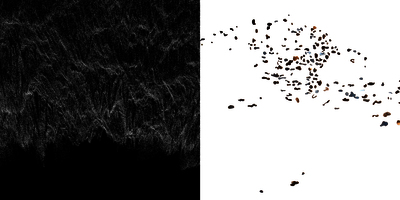Hill, Tracy  ORCID: 0000-0002-6218-4242 and Robinson, Sarah
(2019)
Technological Perceptions of Wetlands: Enhancing or Removing our Embodied Place in the World?
In: CREATEC, 21st August 2019, Edith Cowan University Perth WA.
(Unpublished)
ORCID: 0000-0002-6218-4242 and Robinson, Sarah
(2019)
Technological Perceptions of Wetlands: Enhancing or Removing our Embodied Place in the World?
In: CREATEC, 21st August 2019, Edith Cowan University Perth WA.
(Unpublished)
![Technological Perceptions of Wetlands. [thumbnail of Technological Perceptions of Wetlands.]](https://clok.uclan.ac.uk/29724/1.hassmallThumbnailVersion/SRTH%20image.jpg)  Preview |
Image (JPEG) (Technological Perceptions of Wetlands.)
- Presentation
Available under License Creative Commons Attribution Non-commercial No Derivatives. 4MB |
Official URL: https://www.ecu.edu.au/schools/arts-and-humanities...
Abstract
The ability to digitally extract the unseen dimensions of a landscape is a ubiquitous tool for both artist and scientist; Lidar scanning technology has revealed a hidden Mayan City concealed under dense Brazilian rain forest, while drone surveillance ‘sees’ if construction work corresponds to 3D space-time data.
Featureless ancient wetland landscapes have traditionally been represented as places of darkness, disease and death within Western Culture. Despite an increasing recognition for the need to readjust our perceptions of these spaces and to acknowledge their environmental importance as living landscapes there is seemingly little imagery to promote this new way of seeing. We ask how might digitalisation change the way we navigate our sense of place or influence the sites that we embody?
At the exact coordinates X: 435125 Y: 4812360 in Spain Hill’s creative response to UK wetlands and Robinson’s insight into Lake Walyungup resided. Within the portico of the 1920s Palacete del Embarcadero a new transdisciplinary conversation began. This encounter opened up new dialogues between artworks and audiences offering a proposition for us to expand existing ideas and research methods in order to readjust perceptions and offer new insights into hidden or invisible global wetland narratives.
This paper explores the role of digital technologies within fine art practice with specific focus on the Matrix of Movement and Talking Place: Unfolding Conversations to challenge conventions that map, organise, archive visual digital data in response to the human experience of walking. Hill and Robinson now traverse landscapes in different hemispheres, in seemingly different yet ominously similar ways.
Repository Staff Only: item control page

 Tools
Tools Tools
Tools https://orcid.org/0000-0002-6218-4242
https://orcid.org/0000-0002-6218-4242
